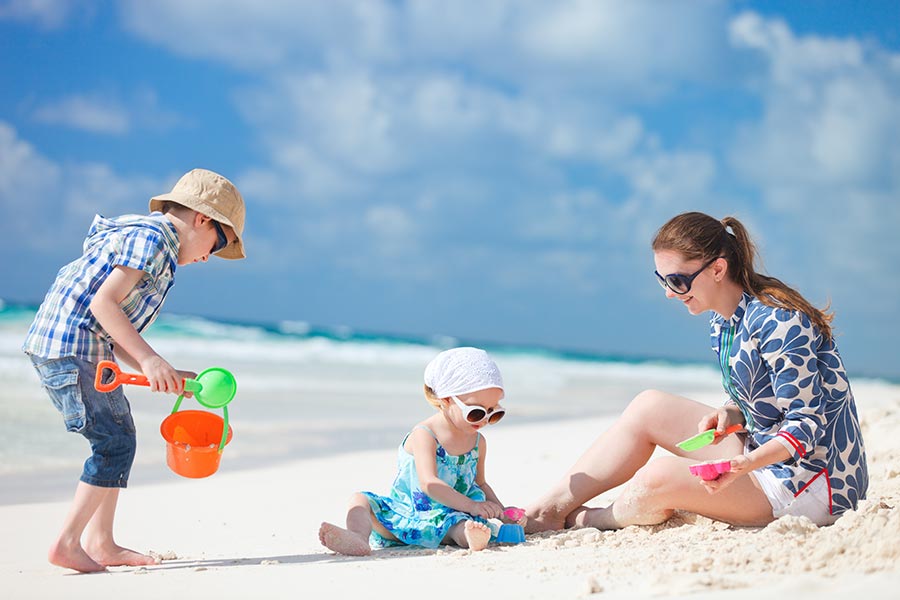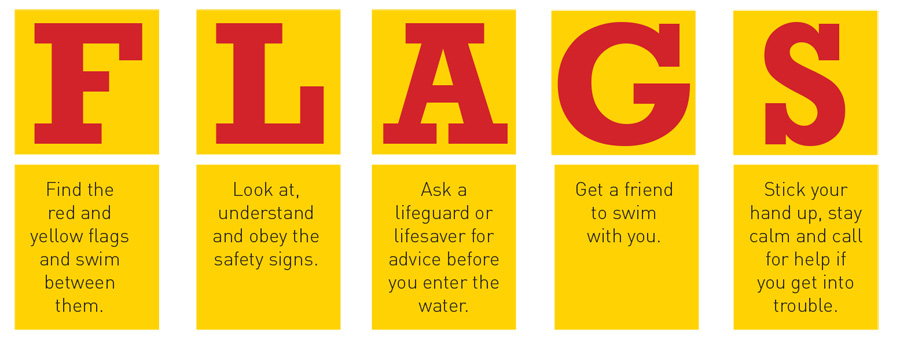Outdoor Safety
Sun Safety
Protect your skin
For best protection, a combination of sun protection measures is recommended, sunscreen alone will not provide adequate protection against overexposure to ultraviolet (UV) radiation. Cancer Council recommends five steps to protect against sun damage during the daily sun protection times (when the UV level is 3 and above):
1. Slip on sun-protective clothing.
2. Slop on SPF30 or higher sunscreen – make sure it is broad-spectrum and water-resistant. Put it on 20 minutes
before you go outdoors and re-apply every two hours.
3. Slap on a hat – that protects your face, head, neck and ears.
4. Seek shade.
5. Slide on sunglasses – make sure they meet Australian Standards.
UV levels are most intense during the middle of the day. Check the daily sun protection times, available:
- on the free SunSmart app
- online at sunsmart.com.au or bom.gov.au/weather/uv
- in the weather section of newspapers
- as a free website widget.
The sun protection times show when the UV Index is forecast to be 3 or above.
What is SPF?
What do all the terms mean?
- SPF: The SPF (Sun Protection Factor) of a sunscreen is a measure of how well it protects the skin from sunburn. Sunscreens need to be applied liberally to achieve the SPF protection claimed on the label.
- Water resistant: Does not come off the skin during swimming or exercise, provided it is not wiped off. While a label may state a sunscreen is ‘4 hours water resistant’, sunscreen still needs to be applied every two hours to maintain the same level of protection.
- Broad-spectrum: Broad-spectrum sunscreens filter both UVA and UVB rays. UVB is the principal cause of sunburn, but both UVA and UVB contribute to increased skin cancer risk.
- The ‘+’ sign: The plus sign means ‘more than’. For example, the new SPF50+ sunscreen must provide at least SPF60 in testing. This is because the same batch of sunscreen will test slightly differently in different laboratories with different methodology. By testing at SPF60, it removes any margin for error. In the previous 1998 standard, some sunscreens labelled SPF30+ actually provided much higher protection, but were not allowed to be labelled any higher than 30+. In the new standard, sunscreens can be labelled higher than SPF30+, SO the ‘+’ sign after SPF30 is redundant.
THREE SIMPLE TIPS TO KEEP YOU SAFE AT THE BEACH
What should you be looking out for?
The red and yellow flags

The red and yellow flags show the supervised area of the beach and that a lifesaving service is operating.
Warning signs

Warning signs will highlight any potential hazards you should be looking out for.
The lifeguards and lifesavers
Lifeguards and lifesavers are person there to supervise you and provide advice on beach conditions. You should check to see what uniform your life saving service is wearing when you get to the beach so you know what to look for in an emergency.
To enjoy the beach safely, remember:

Everyone
- Always swim between the red and yellow flags.
- Stay calm. Don’t panic.
- Raise an arm to attract attention if you feel you need help.
- Do not try to swim against the current.
Strong Swimmers
- If you are confident, swim parallel to the beach – often this is towards the sandbank or breaking waves which can assist you back to shore.
Weak Swimmers
- If you are not a confident swimmer – don’t go in the water. Learn how to swim by visiting these websites and finding a local swim school:
- http://www.swimkids.com.au/find-a-swimming-school/
- http://www.austswim.com.au/Swimcentres/FindaSwimCentre.aspx
Free SunSmart app
Overexposure to ultraviolet (UV) radiation causes wrinkles and skin and eye damage, ultimately leading to skin cancer.
UV cannot be seen or felt. It is not like the sun’s light which we see, or the sun’s warmth (infrared radiation) which we feel. Our senses cannot detect UV so it can be damaging without us knowing.
The free SunSmart app tells you when sun protection is recommended for your location using forecast information from the Bureau of Meteorology website and live UV data from ARPANSA.
Features
- Personalisation: Download the app and personalise it with your natural skin type, height, weight, age, gender and set your location for anywhere in Australia.
- Reminders: Set up a sun protection alert and receive daily reminders for the times of day when UV reaches a level that can damage your skin and eyes, as well as two-hour reminders to re-apply sunscreen.
- Sunscreen calculator: Use the sunscreen calculator to find out how much sunscreen you need to apply, taking account of your size and clothing.
- Vitamin D tracker: Find out how much UV exposure you need for vitamin D.
- Seven-day weather forecast: Check the weather for the week ahead for any location in Australia.






